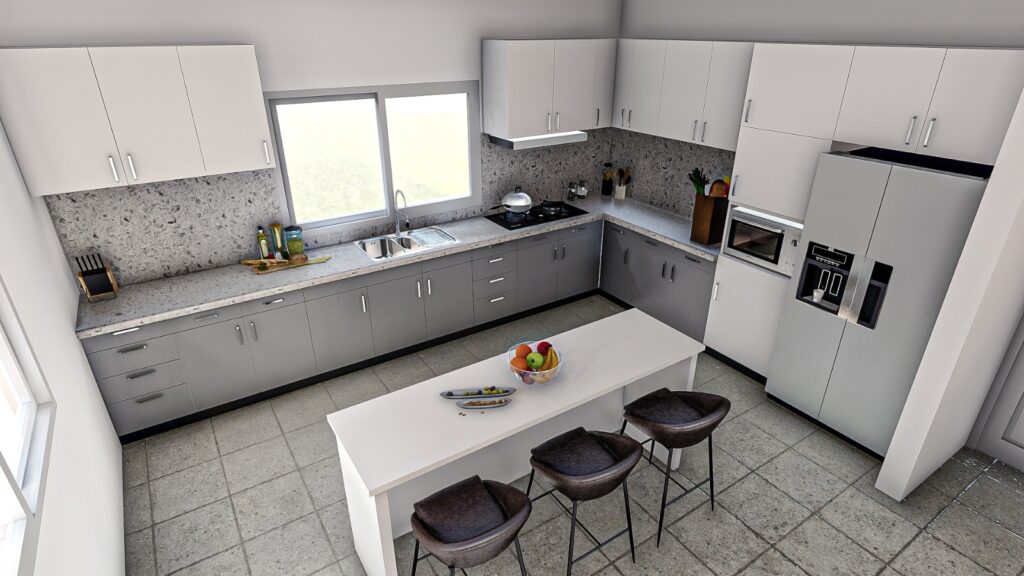When it comes to home improvement, remodeling and renovations are two of the most impactful ways to transform your living space. Whether you’re looking to modernize your kitchen, expand your living room, or create a more functional bathroom, a well-planned renovation can breathe new life into your home. This comprehensive guide will walk you through the essential aspects of remodeling and renovations, helping you achieve the home of your dreams.
Understanding the Difference: Remodeling vs. Renovation
Before diving into the specifics, it’s crucial to understand the distinction between remodeling and renovations. While these terms are often used interchangeably, they refer to different types of projects:
- Renovation: Involves restoring or repairing your home to its original condition or updating it with cosmetic changes. Renovations are typically focused on improving existing structures and can range from repainting walls to replacing flooring or upgrading fixtures.
- Remodeling: Goes beyond restoration and involves changing the structure, layout, or functionality of a space. Remodeling projects often include altering the floor plan, adding new rooms, or significantly changing the design of a space to meet new needs.
Knowing the difference between these two can help you better plan your project and communicate your vision to contractors and designers.
Key Steps in the Remodeling and Renovation Process
A successful remodeling or renovation project requires careful planning and execution. Here’s a step-by-step guide to help you through the process:
- Define Your Goals and Budget
- Identify Your Needs: Start by determining what you want to achieve with your renovation. Are you looking to increase space, improve functionality, or update the style? Understanding your goals will help guide the design and planning process.
- Set a Budget: Establishing a budget is crucial. Consider the scope of the project, materials, labor, and any unforeseen expenses. It’s wise to allocate 10-15% of your budget for contingencies.
- Hire the Right Professionals
- Contractor vs. Designer: Depending on the complexity of your project, you may need to hire a contractor, an interior designer, or both. Contractors are essential for structural changes, while designers can help with aesthetics and layout.
- Check Credentials: Always vet professionals by checking their licenses, insurance, references, and previous work. A reputable contractor will provide you with a clear contract outlining the scope of work, timeline, and costs.
- Create a Detailed Plan
- Design and Layout: Work with your designer or architect to create a detailed plan that reflects your goals. Consider flow, functionality, and aesthetics. This plan will serve as the blueprint for your project.
- Material Selection: Choose materials that suit your style, budget, and lifestyle. For example, select durable flooring for high-traffic areas and easy-to-clean surfaces for kitchens and bathrooms.
- Obtain Necessary Permits
- Compliance: Depending on the scope of your project, you may need to obtain permits from your local building authority. This ensures that your renovation complies with local building codes and regulations.
- Inspections: Once your project is underway, regular inspections may be required at various stages to ensure the work meets safety and quality standards.
- Execute the Project
- Construction: With a solid plan and permits in hand, construction can begin. This phase involves demolition (if necessary), framing, electrical and plumbing work, insulation, drywall installation, and more.
- Stay Involved: Regularly communicate with your contractor to ensure the project stays on track. Be prepared for unexpected challenges and make decisions promptly to avoid delays.
- Final Touches
- Painting and Finishing: After the major construction work is completed, focus on the finishing touches like painting, installing fixtures, and adding trim. These details can significantly impact the overall look and feel of the space.
- Furniture and Decor: Once the renovation is complete, it’s time to furnish and decorate your new space. Choose pieces that complement your design and enhance the functionality of the room.
Popular Remodeling and Renovation Projects
Here are some popular areas of the home that homeowners often choose to remodel or renovate:
- Kitchen Remodeling
- Upgrade Appliances: Modernize your kitchen with energy-efficient appliances that not only save money but also improve the cooking experience.
- New Countertops and Cabinets: Install new countertops and cabinets for a fresh look and increased storage. Materials like quartz, granite, and hardwood are durable and stylish options.
- Open Floor Plan: Consider removing walls to create an open-concept kitchen that flows seamlessly into your living or dining area.
- Bathroom Renovations
- Luxury Fixtures: Upgrade to high-end fixtures like rain showers, freestanding tubs, and modern vanities for a spa-like experience at home.
- Tiling and Flooring: Replace outdated tiles with contemporary designs that enhance the bathroom’s aesthetics and durability.
- Storage Solutions: Add built-in shelving, cabinets, or a vanity with ample storage to keep your bathroom organized and clutter-free.
- Living Room Remodeling
- Open Space: Create an open and inviting living room by removing unnecessary partitions or walls. This not only improves flow but also makes the space feel larger.
- Lighting Upgrades: Install recessed lighting, chandeliers, or floor lamps to enhance ambiance and highlight key features of the room.
- Fireplace Makeover: Consider updating or installing a fireplace as a focal point that adds warmth and character to your living space.
- Bedroom Renovations
- Master Suite: Transform your bedroom into a master suite by adding an en-suite bathroom, walk-in closet, or sitting area.
- Custom Closets: Optimize storage with custom-built closets that include shelving, drawers, and hanging space tailored to your needs.
- Window Treatments: Upgrade your window treatments with blackout curtains or motorized blinds to improve comfort and privacy.
The Importance of Integrity and Commitment in Remodeling Projects
At the heart of any successful remodeling or renovation project lies a commitment to integrity and quality. Choosing a contractor or company that values these principles ensures that your project will be completed with the highest standards of workmanship and professionalism. Integrity means being honest and transparent about costs, timelines, and potential challenges, while commitment involves dedicating the necessary time and resources to deliver exceptional results.



